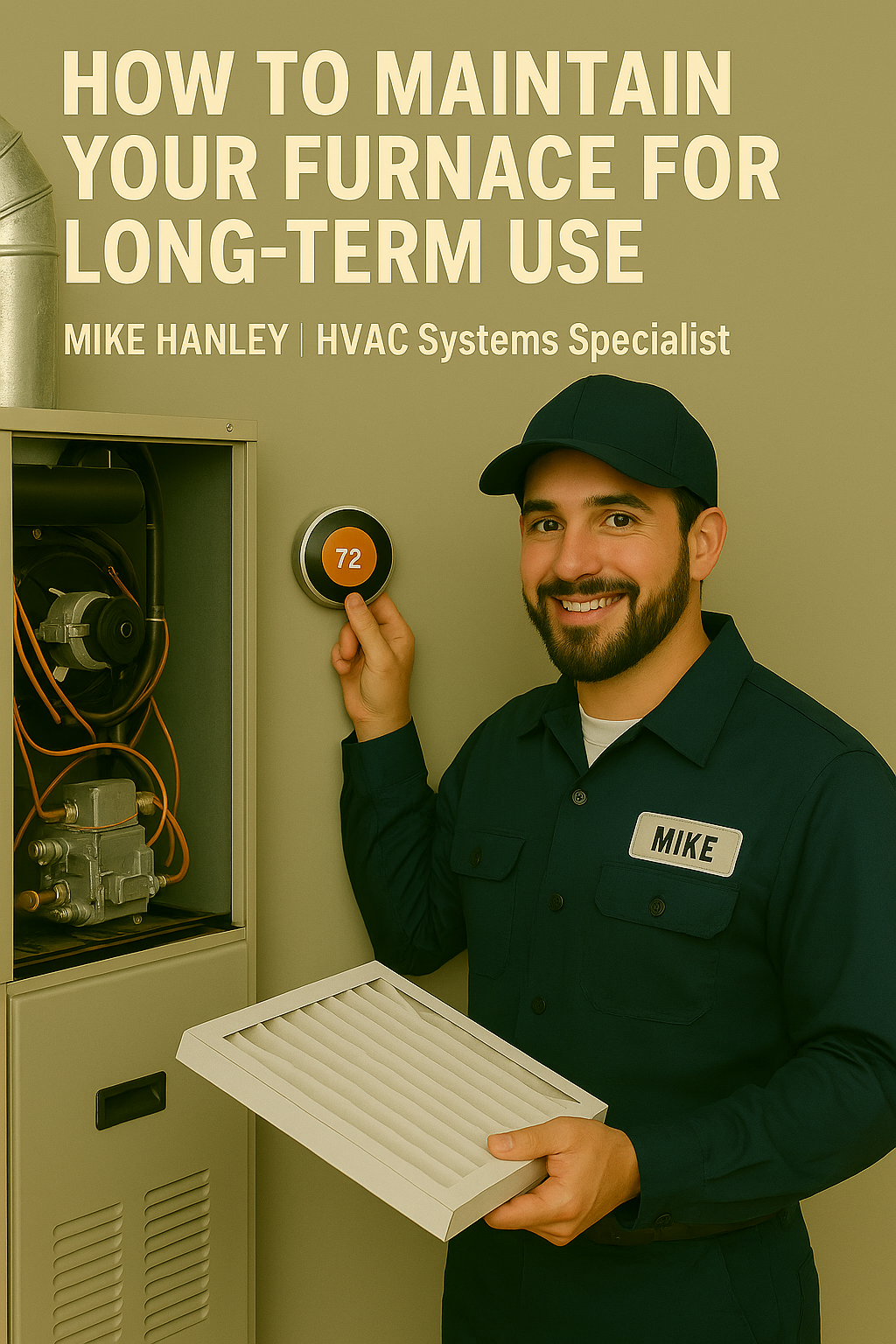📘 Table of Contents
🏠 Furnace Maintenance for Reliable Warmth
Taking care of your furnace means fewer breakdowns and a home that stays warm and energy-efficient throughout the year. Regular maintenance helps your system run better, reduces energy waste, and prevents costly repairs down the road.
This guide will walk you through basic upkeep routines, explain how maintenance varies by furnace type, and offer advice on when to call in a professional. Whether you’re new to HVAC systems or just want to extend your furnace’s lifespan, you’ll find everything you need right here.
❄️ Understanding Furnace Types and Maintenance Needs
Not all furnaces are created equal. Understanding your specific type can significantly improve the efficiency and effectiveness of your maintenance efforts. Here’s a brief overview:
|
Furnace Type |
Fuel Source |
Maintenance Priority |
Ideal Scenario |
|
Gas Furnace |
Natural Gas |
Burner and heat exchanger safety, CO detection |
Homes with existing gas lines |
|
Electric Furnace |
Electricity |
Blower and heating elements, electrical inspection |
Homes without gas access |
|
Oil Furnace |
Heating Oil |
Burner nozzle, soot buildup, combustion efficiency |
Rural areas, older homes |
Each system has its quirks. For example, gas furnaces must be monitored for carbon monoxide risks, while oil furnaces require frequent soot cleanup. Electric units may seem simpler but still need regular inspection to stay efficient.
If you're unsure which system you have or what maintenance it needs, check out these guides:
🛠 Essential Furnace Maintenance Steps
Once you’ve identified your furnace type, it’s time to get hands-on. These maintenance steps apply to most systems and can help prevent major issues down the line.
🔄 Replace Furnace Filters Regularly
Dirty filters make your furnace work harder, which increases wear and raises your utility bills. Swap them out every 1 to 3 months, especially during peak usage.
Using a high-efficiency pleated filter can trap more debris and improve airflow. Just make sure it fits your system’s MERV rating specs.
🧼 Inspect and Clean Ductwork
Leaks or blockages in your duct system can waste heat and lower indoor air quality. Seal visible gaps with foil-backed HVAC tape, and have your ducts cleaned periodically to remove dust buildup.
Want to go deeper? Read about ductwork and airflow optimization.
🌡 Test and Calibrate Thermostats
Even if you use a smart thermostat, it still needs an occasional check-up. Make sure readings are accurate and settings are responsive. If your model is older, consider upgrading to something like a programmable thermostat for better energy control and diagnostics.
🔒 Monitor and Maintain Safety Devices
Inspect your carbon monoxide detectors and smoke alarms at least once a year. Clean flame sensors and check for visible cracks in the heat exchanger—these could pose serious safety risks.
For more safety tips, see this EPA guide on indoor air quality and heating.
📊 Comparing DIY vs. Professional Maintenance
Homeowners often wonder whether DIY furnace maintenance is sufficient or if professional assistance is essential. Here’s a helpful comparison:
|
Aspect |
DIY Maintenance |
Professional Maintenance |
|
Cost |
Minimal upfront costs |
Higher, yet preventive cost |
|
Safety & Precision |
Basic checks possible |
Comprehensive safety inspections |
|
Warranty Validity |
May affect warranty conditions |
Often required to keep warranties valid |
|
Diagnostics |
Limited to visible/simple issues |
Detailed diagnostic tools available |
|
Time Commitment |
Moderate but frequent |
Once or twice annually |
Combining basic DIY routines with professional tune-ups is often the most cost-effective strategy. If your furnace is under warranty, skipping annual service could lead to claim denial, so don’t skip it!
✅ Key Takeaways & Next Steps
A few consistent habits can keep your furnace working for years. Here’s a quick recap:
-
Change your filter every 1–3 months using quality replacement filters.
-
Maintain clean ductwork and use a smart thermostat for better energy control.
-
Book annual professional inspections to extend system life and protect your warranty.
➡️ Up Next: Smart Thermostat Integration & Maintenance
Also check out these helpful guides:
-
Ductwork & Airflow Optimization – Improve furnace performance by fixing leaks and improving circulation.
-
Carbon Monoxide & Safety Device Maintenance – Keep your home safe by maintaining sensors and heat exchangers.
-
Humidifier & Indoor Air Quality Upkeep – Enhance comfort and furnace efficiency through IAQ systems.
-
Oil Furnace Maintenance Guide – Learn how to properly care for oil-burning systems.
❓ FAQ
Q: How often should I schedule professional furnace maintenance?
A: Ideally, schedule a professional checkup at least once per year, typically before the heating season begins.
Q: Can neglecting furnace maintenance void my warranty?
A: Yes, many furnace warranties require documented, regular professional maintenance to remain valid.
Q: What furnace filter type should I use?
A: A high-quality pleated or electrostatic filter offers excellent filtration. Always consult your furnace’s manual for recommended MERV ratings.
Q: Are smart thermostats compatible with older furnaces?
A: Generally, yes, smart thermostats can be integrated with older furnace models, but compatibility checks are recommended.







